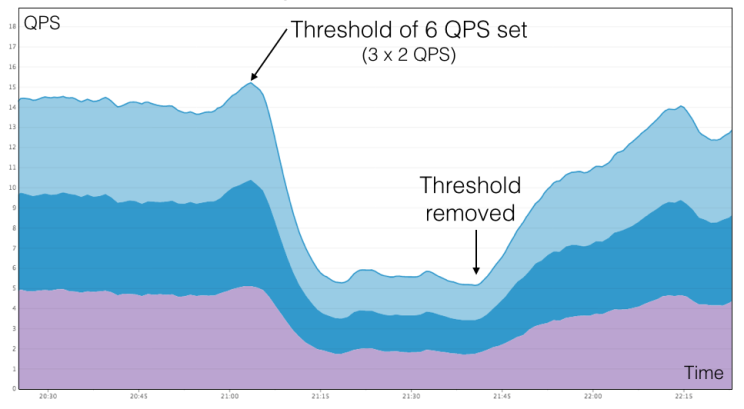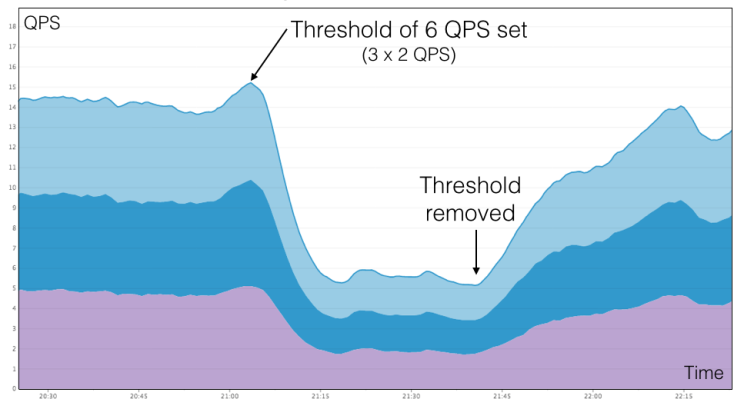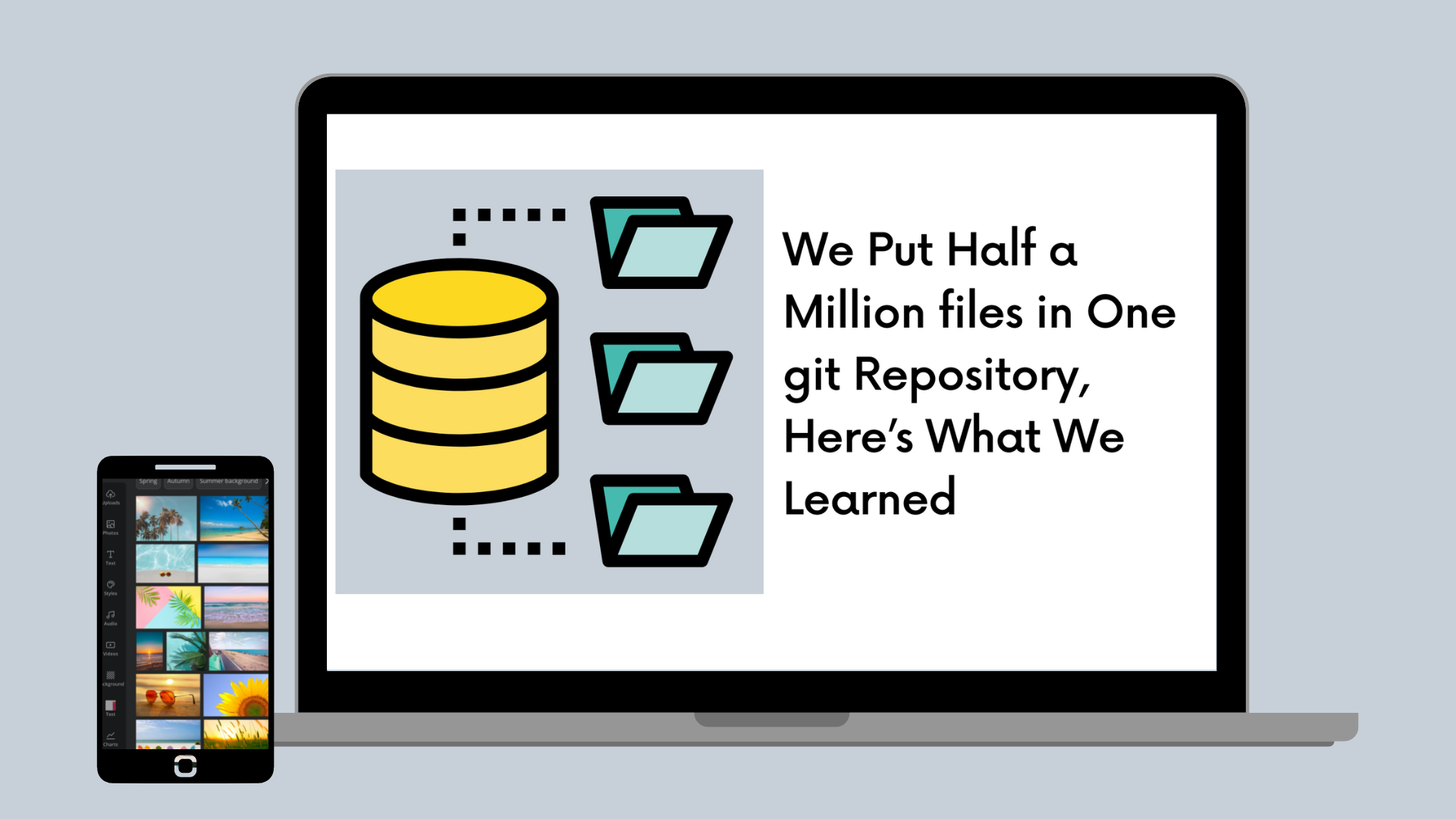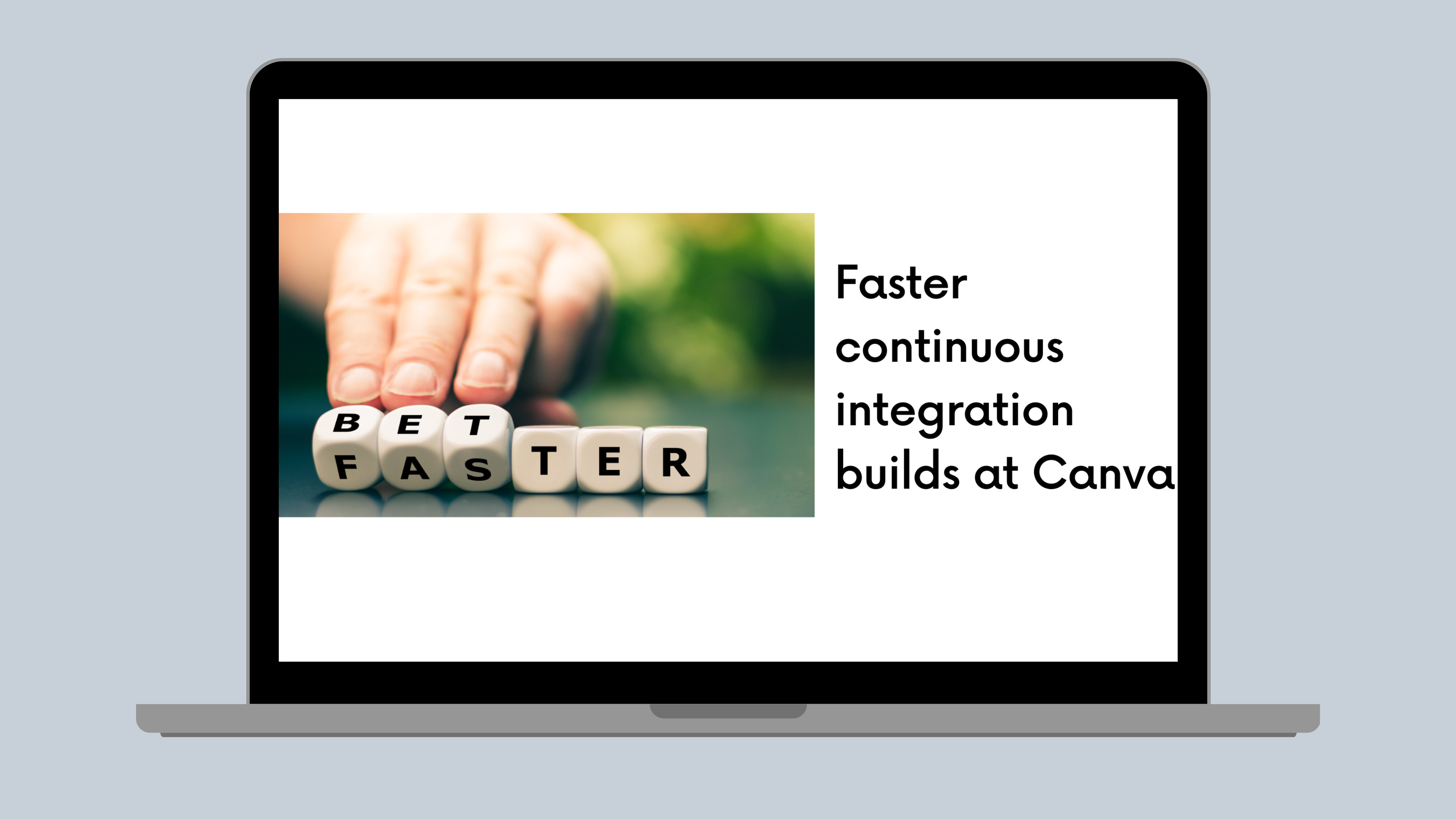Performance
Knowing when to back off
During periods of heavy use, we needed a mechanism to ask the browser and mobile apps to back off and reduce the frequency of auto-saves.

Originally published by Brendan Humphreys(opens in a new tab or window) at product.canva.com(opens in a new tab or window) on May 28, 2015.
Canva's design editor(opens in a new tab or window) features an auto-save function. While you're working on a design we periodically send differences to our server. This means you don't lose too much work if your computer crashes or you accidentally close your browser tab. During periods of heavy use, we needed a mechanism to ask the browser and iOS applications to back off and reduce the frequency of auto-saves.
Tradeoffs
There is an obvious technical trade-off with the auto-save rate: the more often we save your design, the less you lose in the event of a mishap, but with more write operations occurring through the backend and to the database cluster. We happen to use a MongoDB(opens in a new tab or window) cluster to store the design information as it efficiently stores the data in the way the design editor works with it.
We initially opted for an aggressive auto-save rate (every five seconds in a constantly changing design), which worked well under normal load. However, we occasionally get large spikes in design activity, and these would rapidly consume our available write capacity on the database, leading to severe performance degradation for everyone using Canva. Similarly, we may wish to perform a live migration or other maintenance on the database cluster, which again reduces available write capacity. This shouldn't make Canva unusable. The biggest contributor to write load was the auto-save feature.
One option to deal with this is to increase our steady-state write capacity by scaling up our database cluster, but this means under normal load much of our newly acquired (and expensive) write capacity goes unused.
Instead, we wanted a way to dynamically adjust the design auto-save rate, asking each client to back off for a while. This would allow us to smooth out and control the demand for writes to the database during usage spikes. In networking terms, what we wanted was a way to send a back pressure(opens in a new tab or window) signal to each client, telling it to change its auto-save rate.
Implementing a go-slow signal
The solution we implemented allows us to set auto-save thresholds for
both throughput (in terms of queries-per-second, or QPS) and latency (in
terms of milliseconds). A monitor tracks a five minute moving average of
throughput and latency for the update-content method (which backs the
auto-save feature). If either configured threshold is exceeded, we add a
"throttle": true attribute to the response sent back to the client.
Monitor
The threshold monitor implementation is simple enough, backed by a Metrics Timer(opens in a new tab or window):
public class ThresholdMonitor {private final int maxQps;private final int maxLatency;private final Timer timer;public ThresholdMonitor(int maxQps, int maxLatency) {this.maxQps = maxQps;this.maxLatency = maxLatency;this.timer = new Timer();}public Context start() {return timer.time();}public boolean thresholdExceeded() {int qps = (int) timer.getFiveMinuteRate();int latency = (int) TimeUnit.NANOSECONDS.toMillis((long) timer.getSnapshot().getMedian());return qps > maxQps || latency > maxLatency;}}
Usage is similarly simple. Here's a generic example setting target thresholds of 15 QPS throughput, and 500ms latency:
private final ThresholdMonitor monitor = new ThresholdMonitor(15, 500);public void expensiveOp() {Context t = monitor.start();// do something you want to monitor and thresholdt.stop();if (monitor.thresholdExceeded()) {// take some action to throttle or degrade}}
In our real-world usage, we configure the monitor with dynamic thresholds that can be adjusted at runtime, allowing us to tune the thresholds. We also need to factor in the number of running instances of the service when calculating the thresholds.
We're deliberately not using a try...finally to unconditionally call
t.stop() on our monitor. In our usage, we don't want failures to
contribute to the monitor statistics as failures tend to be fast, and so
would skew the monitoring.
Telling clients to throttle
For a variety of reasons we elected to communicate throttling information to clients using a single boolean attribute in the JSON response. An alternative might be to use a custom HTTP Header:
Canva-Throttle: true
Fast slow down, slow speed up
Both our iOS and web clients respond to the throttle signal using a
technique borrowed from TCP congestion control: Additive Increase / Multiplicative
Decrease(opens in a new tab or window) (AIMD). Every time a client receives a response with
"throttle": true, it halves the rate of auto-saves (the multiplicative
decrease), down to a minimum allowed rate. Conversely, when a
"throttle": false is received, we increase the rate of auto-saves by a
set amount (the additive increase), up to an allowed maximum rate. In
our iOS app, the code looks like this:
-(void) updateThrottle: (BOOL) throttle {NSTimeInterval interval = self.syncInterval;if (throttle) {interval *= 2.0f;}else {interval -= 1.0f;}self.syncInterval = MIN(MAX(interval, kCANMinSyncInterval), kCANMaxSyncInterval);}
Using AIMD Clients rapidly back off when a threshold is exceeded, quickly reducing write load on the backend. Once the load is below the target threshold, clients slowly increase their autosave rate, each converging on the rate that will maintain write operations at a level just below the target threshold. This is another advantage of AIMD: all clients will converge on the same rate, so the auto-save capacity is shared fairly.
Watching clients back off

Here we have singled out three production instances of the document service, handling about 14 QPS of update-content traffic between them in steady state. We then applied a threshold of 6 QPS throughput across all three (averaging 2 QPS per node). The impact is immediate, as clients receive the throttle signal and back off by halving their auto-save rate until the target threshold is achieved, at which point throughput levels off. Once the threshold is removed, clients slowly revert to their preferred update rate.
The shapes of the response curves are determined by the AIMD parameters, and are worth experimenting with to get the desired behavior.


